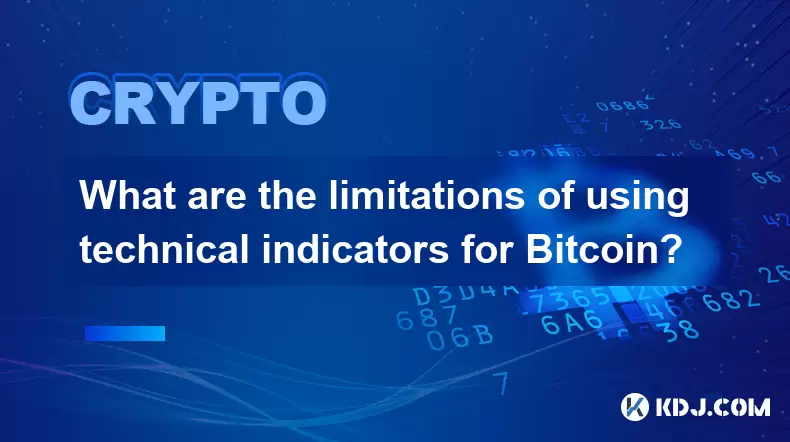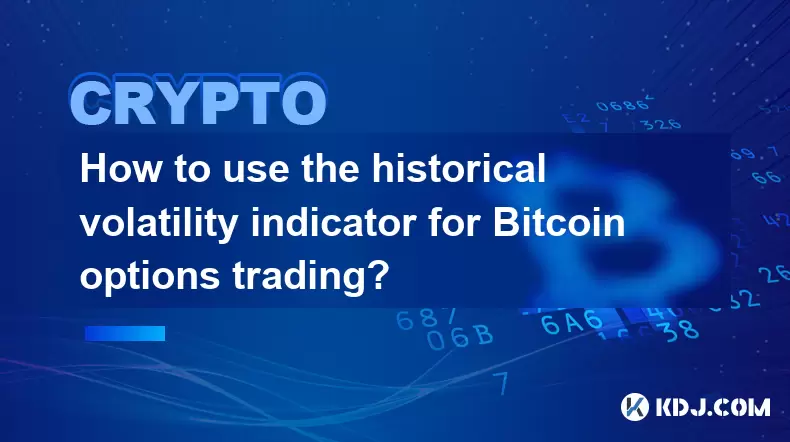-
 Bitcoin
Bitcoin $108,151.9523
0.11% -
 Ethereum
Ethereum $2,520.6389
0.26% -
 Tether USDt
Tether USDt $1.0002
0.00% -
 XRP
XRP $2.2654
2.16% -
 BNB
BNB $656.3481
0.23% -
 Solana
Solana $148.3243
0.26% -
 USDC
USDC $1.0000
0.00% -
 TRON
TRON $0.2847
0.24% -
 Dogecoin
Dogecoin $0.1655
1.16% -
 Cardano
Cardano $0.5789
1.10% -
 Hyperliquid
Hyperliquid $38.9650
-0.58% -
 Sui
Sui $2.8914
-0.61% -
 Bitcoin Cash
Bitcoin Cash $487.4743
1.11% -
 Chainlink
Chainlink $13.2128
0.30% -
 UNUS SED LEO
UNUS SED LEO $9.0219
-0.03% -
 Avalanche
Avalanche $17.9307
0.73% -
 Stellar
Stellar $0.2400
1.57% -
 Toncoin
Toncoin $2.9074
6.15% -
 Shiba Inu
Shiba Inu $0.0...01162
1.83% -
 Litecoin
Litecoin $87.2310
1.00% -
 Hedera
Hedera $0.1550
0.24% -
 Monero
Monero $314.8034
0.95% -
 Dai
Dai $1.0000
0.00% -
 Polkadot
Polkadot $3.3587
0.34% -
 Ethena USDe
Ethena USDe $1.0002
0.00% -
 Bitget Token
Bitget Token $4.3862
-0.27% -
 Uniswap
Uniswap $7.2908
4.86% -
 Pepe
Pepe $0.0...09825
1.65% -
 Aave
Aave $271.1484
-0.22% -
 Pi
Pi $0.4517
-1.99%
Does Bitcoin transaction require a handling fee? What determines the level of handling fees?
Bitcoin transactions require a fee, influenced by transaction size, urgency, and network congestion; miners prioritize higher fees for quicker processing.
Apr 27, 2025 at 06:49 pm

Does Bitcoin Transaction Require a Handling Fee? What Determines the Level of Handling Fees?
Bitcoin transactions indeed require a handling fee, commonly referred to as a transaction fee. These fees play a crucial role in the Bitcoin network, ensuring the smooth and timely processing of transactions. The level of handling fees is determined by several factors, including the size of the transaction in bytes, the urgency of the transaction, and the current network congestion.
What is a Bitcoin Transaction Fee?
A Bitcoin transaction fee is the amount of Bitcoin that a user pays to miners to process and validate their transaction. Miners prioritize transactions with higher fees because they are incentivized to include these in the next block they mine, as it increases their reward. The fee is not fixed and can vary widely depending on the factors mentioned above.
Factors Influencing Bitcoin Transaction Fees
Transaction Size
The size of a transaction in bytes is a significant determinant of the fee. Larger transactions, which often involve multiple inputs and outputs, take up more space in a block. As a result, they require a higher fee to be processed quickly. The size is influenced by the number of inputs and outputs in the transaction. For instance, if you are consolidating multiple smaller amounts of Bitcoin into a single address, the transaction size increases, thereby increasing the fee.
Urgency of the Transaction
The urgency of the transaction also impacts the fee. If you need your transaction to be confirmed quickly, you will need to pay a higher fee. Miners prioritize transactions with higher fees, so if you set a low fee, your transaction might take longer to be included in a block. This is particularly important during times of high network congestion.
Network Congestion
Network congestion plays a pivotal role in determining transaction fees. When the Bitcoin network is busy, with many transactions waiting to be processed, miners have the luxury of picking transactions with the highest fees. During these periods, even standard fees may not be enough to get your transaction processed quickly. Conversely, during times of low network activity, even lower fees can result in quick confirmations.
How to Set the Right Transaction Fee
Setting the right transaction fee can be a bit tricky, but there are tools and strategies that can help. Here are some steps to guide you in setting an appropriate fee:
- Use a fee estimator tool: Many wallets and online platforms offer fee estimator tools that suggest an appropriate fee based on current network conditions. These tools take into account the current block size, the number of pending transactions, and other relevant factors.
- Consider the transaction size: If you know the size of your transaction in bytes, you can calculate the fee manually. A common rule of thumb is to pay around 1 satoshi per byte, but this can vary based on network conditions.
- Adjust based on urgency: If your transaction is time-sensitive, consider paying a higher fee to ensure it gets processed quickly. Conversely, if you can afford to wait, a lower fee might be sufficient.
- Monitor network conditions: Keep an eye on the current state of the Bitcoin network. Websites like Blockchain.com and BitcoinFees.earn.com provide real-time data on network congestion and recommended fees.
Examples of Bitcoin Transaction Fees
To illustrate how fees can vary, consider the following examples:
- Low-priority transaction: If you are sending a small amount of Bitcoin and are not in a hurry, you might set a fee of 1 satoshi per byte. For a transaction size of 250 bytes, this would equate to a fee of 250 satoshis (0.0000025 BTC at current rates).
- Medium-priority transaction: If you need the transaction to be confirmed within a few hours, you might opt for a fee of 20 satoshis per byte. For the same transaction size of 250 bytes, this would result in a fee of 5,000 satoshis (0.00005 BTC).
- High-priority transaction: If you need the transaction to be confirmed as quickly as possible, you might set a fee of 100 satoshis per byte. For a 250-byte transaction, this would mean a fee of 25,000 satoshis (0.00025 BTC).
How to Pay the Transaction Fee
Paying the transaction fee is an integral part of the Bitcoin transaction process. Here is how you can pay the fee:
- Using a wallet: Most Bitcoin wallets automatically calculate and include the transaction fee when you send Bitcoin. You can usually adjust the fee within the wallet's settings if you want to prioritize speed or save on costs.
- Manual calculation: If you are using a more advanced wallet or a command-line interface, you can manually calculate the fee based on the transaction size and your desired priority. You then include this fee in the transaction data before broadcasting it to the network.
- Third-party services: Some third-party services allow you to batch multiple transactions together, potentially reducing the overall fee. These services can be useful if you frequently send small amounts of Bitcoin.
Frequently Asked Questions
Q: Can I send a Bitcoin transaction without a fee?
A: Technically, it is possible to send a Bitcoin transaction without a fee, but it is highly unlikely to be processed by miners. Miners prioritize transactions with fees, so a zero-fee transaction may never be confirmed, especially during times of high network congestion.
Q: How can I reduce my Bitcoin transaction fees?
A: To reduce Bitcoin transaction fees, you can wait for periods of low network congestion, consolidate multiple smaller transactions into a single larger transaction, and use wallets or services that offer fee optimization. Additionally, setting a lower fee and being patient can also help reduce costs.
Q: What happens if I set a fee that is too low?
A: If you set a fee that is too low, your transaction may take a long time to be confirmed, or it may never be confirmed at all. During periods of high network activity, miners will prioritize transactions with higher fees, leaving low-fee transactions in the mempool for an extended period.
Q: Can I change the fee after sending a Bitcoin transaction?
A: In some cases, you can use the Replace-By-Fee (RBF) feature to increase the fee of a transaction that has not yet been confirmed. However, not all wallets support RBF, and it is not guaranteed that the transaction will be confirmed even after increasing the fee. It is always best to set an appropriate fee initially.
Disclaimer:info@kdj.com
The information provided is not trading advice. kdj.com does not assume any responsibility for any investments made based on the information provided in this article. Cryptocurrencies are highly volatile and it is highly recommended that you invest with caution after thorough research!
If you believe that the content used on this website infringes your copyright, please contact us immediately (info@kdj.com) and we will delete it promptly.
- Litecoin Breakout Watch: What Traders Need to Know Now
- 2025-07-06 16:50:13
- Bitcoin, Solana, Ethereum: Decoding the Latest Buzz on the Blockchain
- 2025-07-06 16:50:13
- Widnes Resident's 50p Could Be Your Ticket to Easy Street: Rare Coin Mania!
- 2025-07-06 16:55:13
- Bitcoin, Solaris Presale, and Token Rewards: What's the Buzz?
- 2025-07-06 16:55:13
- Ethereum Under Pressure: Price Drop Amid Global Uncertainties
- 2025-07-06 17:00:13
- XRP, SEC Case, and Prosperity: A New Era for XRP Holders?
- 2025-07-06 17:10:13
Related knowledge

What is the Woodies CCI indicator and can it be used for Bitcoin?
Jul 04,2025 at 05:14pm
Understanding the Woodies CCI IndicatorThe Woodies CCI indicator is a variation of the traditional Commodity Channel Index (CCI), which was originally developed by Donald Lambert. The standard CCI measures the current price level relative to an average price over a given period, typically 14. However, the Woodies version modifies this calculation to mak...

How to use indicators to trade the opening range breakout for Bitcoin CME futures?
Jul 05,2025 at 07:35pm
What Is the Opening Range Breakout Strategy?The opening range breakout (ORB) strategy is a popular trading technique used in both traditional markets and cryptocurrency futures, particularly for Bitcoin on the CME. This method involves identifying a specific price range formed during the early phase of a trading session and then taking positions when th...

What does a bearish cross on the Stochastic RSI mean for Bitcoin?
Jul 05,2025 at 07:18pm
Understanding the Stochastic RSI IndicatorThe Stochastic RSI (Relative Strength Index) is a momentum oscillator used in technical analysis to identify overbought or oversold conditions in an asset's price. It combines two well-known indicators — the RSI and the Stochastic Oscillator — to provide more nuanced signals than either could alone. The Stochast...

What are the limitations of using technical indicators for Bitcoin?
Jul 06,2025 at 03:35am
Understanding the Role of Technical Indicators in Cryptocurrency TradingIn the realm of Bitcoin trading, technical indicators are tools used by traders to analyze historical price data and volume to predict future price movements. These indicators—such as Moving Averages, Relative Strength Index (RSI), and MACD—are widely adopted across traditional fina...

How to use the historical volatility indicator for Bitcoin options trading?
Jul 06,2025 at 04:14am
Understanding the Historical Volatility IndicatorThe historical volatility indicator (HV) is a statistical measure used to assess the price fluctuations of an asset over a specific time period. In the context of Bitcoin options trading, this metric helps traders evaluate past price movements to anticipate potential future swings. Unlike implied volatili...

Best indicator for confirming chart patterns like head and shoulders on Bitcoin
Jul 06,2025 at 01:07pm
Understanding Chart Patterns in Cryptocurrency TradingIn the volatile world of Bitcoin trading, chart patterns serve as critical tools for identifying potential price movements. Among these, the head and shoulders pattern is one of the most reliable reversal indicators. Recognizing this formation requires not only visual identification but also confirma...

What is the Woodies CCI indicator and can it be used for Bitcoin?
Jul 04,2025 at 05:14pm
Understanding the Woodies CCI IndicatorThe Woodies CCI indicator is a variation of the traditional Commodity Channel Index (CCI), which was originally developed by Donald Lambert. The standard CCI measures the current price level relative to an average price over a given period, typically 14. However, the Woodies version modifies this calculation to mak...

How to use indicators to trade the opening range breakout for Bitcoin CME futures?
Jul 05,2025 at 07:35pm
What Is the Opening Range Breakout Strategy?The opening range breakout (ORB) strategy is a popular trading technique used in both traditional markets and cryptocurrency futures, particularly for Bitcoin on the CME. This method involves identifying a specific price range formed during the early phase of a trading session and then taking positions when th...

What does a bearish cross on the Stochastic RSI mean for Bitcoin?
Jul 05,2025 at 07:18pm
Understanding the Stochastic RSI IndicatorThe Stochastic RSI (Relative Strength Index) is a momentum oscillator used in technical analysis to identify overbought or oversold conditions in an asset's price. It combines two well-known indicators — the RSI and the Stochastic Oscillator — to provide more nuanced signals than either could alone. The Stochast...

What are the limitations of using technical indicators for Bitcoin?
Jul 06,2025 at 03:35am
Understanding the Role of Technical Indicators in Cryptocurrency TradingIn the realm of Bitcoin trading, technical indicators are tools used by traders to analyze historical price data and volume to predict future price movements. These indicators—such as Moving Averages, Relative Strength Index (RSI), and MACD—are widely adopted across traditional fina...

How to use the historical volatility indicator for Bitcoin options trading?
Jul 06,2025 at 04:14am
Understanding the Historical Volatility IndicatorThe historical volatility indicator (HV) is a statistical measure used to assess the price fluctuations of an asset over a specific time period. In the context of Bitcoin options trading, this metric helps traders evaluate past price movements to anticipate potential future swings. Unlike implied volatili...

Best indicator for confirming chart patterns like head and shoulders on Bitcoin
Jul 06,2025 at 01:07pm
Understanding Chart Patterns in Cryptocurrency TradingIn the volatile world of Bitcoin trading, chart patterns serve as critical tools for identifying potential price movements. Among these, the head and shoulders pattern is one of the most reliable reversal indicators. Recognizing this formation requires not only visual identification but also confirma...
See all articles

























































































